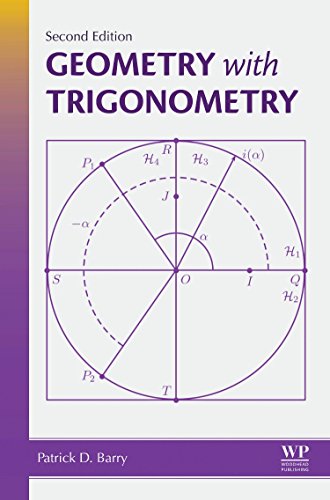

Most ebook files are in PDF format, so you can easily read them using various software such as Foxit Reader or directly on the Google Chrome browser.
Some ebook files are released by publishers in other formats such as .awz, .mobi, .epub, .fb2, etc. You may need to install specific software to read these formats on mobile/PC, such as Calibre.
Please read the tutorial at this link: https://ebookbell.com/faq
We offer FREE conversion to the popular formats you request; however, this may take some time. Therefore, right after payment, please email us, and we will try to provide the service as quickly as possible.
For some exceptional file formats or broken links (if any), please refrain from opening any disputes. Instead, email us first, and we will try to assist within a maximum of 6 hours.
EbookBell Team

4.7
76 reviewsGeometry with TrigonometrySecond Edition is a second course in plane Euclidean geometry, second in the sense that many of its basic concepts will have been dealt with at school, less precisely. It gets underway with a large section of pure geometry in Chapters 2 to 5 inclusive, in which many familiar results are efficiently proved, although the logical frame work is not traditional. In Chapter 6 there is a convenient introduction of coordinate geometry in which the only use of angles is to handle the perpendicularity or parallelism of lines. Cartesian equations and parametric equations of a line are developed and there are several applications. In Chapter 7 basic properties of circles are developed, the mid-line of an angle-support, and sensed distances. In the short Chaper 8 there is a treatment of translations, axial symmetries and more generally isometries. In Chapter 9 trigonometry is dealt with in an original way which e.g. allows concepts such as clockwise and anticlockwise to be handled in a way which is not purely visual. By the stage of Chapter 9 we have a context in which calculus can be developed. In Chapter 10 the use of complex numbers as coordinates is introduced and the great conveniences this notation allows are systematically exploited. Many and varied topics are dealt with , including sensed angles, sensed area of a triangle, angles between lines as opposed to angles between co-initial half-lines (duo-angles). In Chapter 11 various convenient methods of proving geometrical results are established, position vectors, areal coordinates, an original concept mobile coordinates. In Chapter 12 trigonometric functions in the context of calculus are treated.
New to this edition: